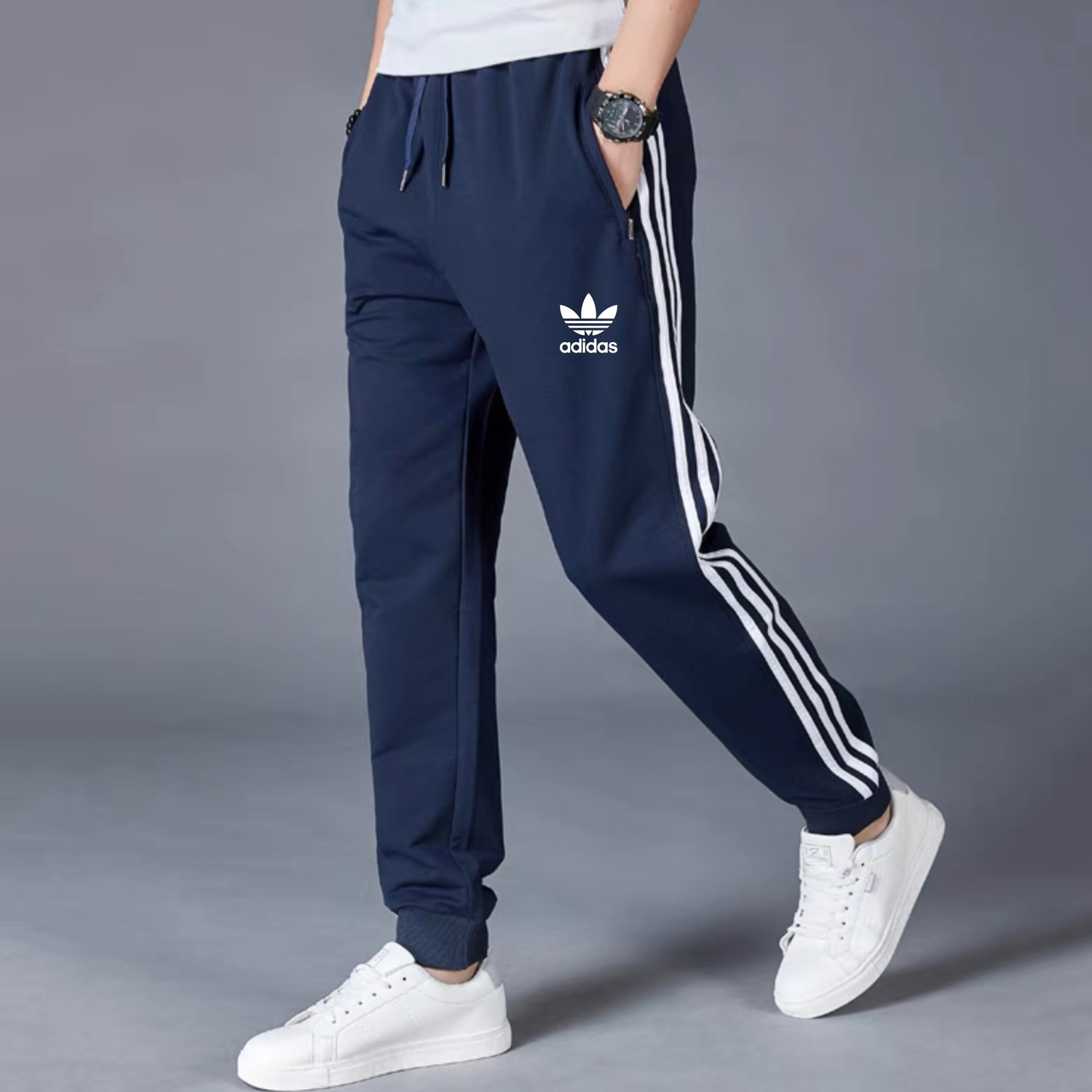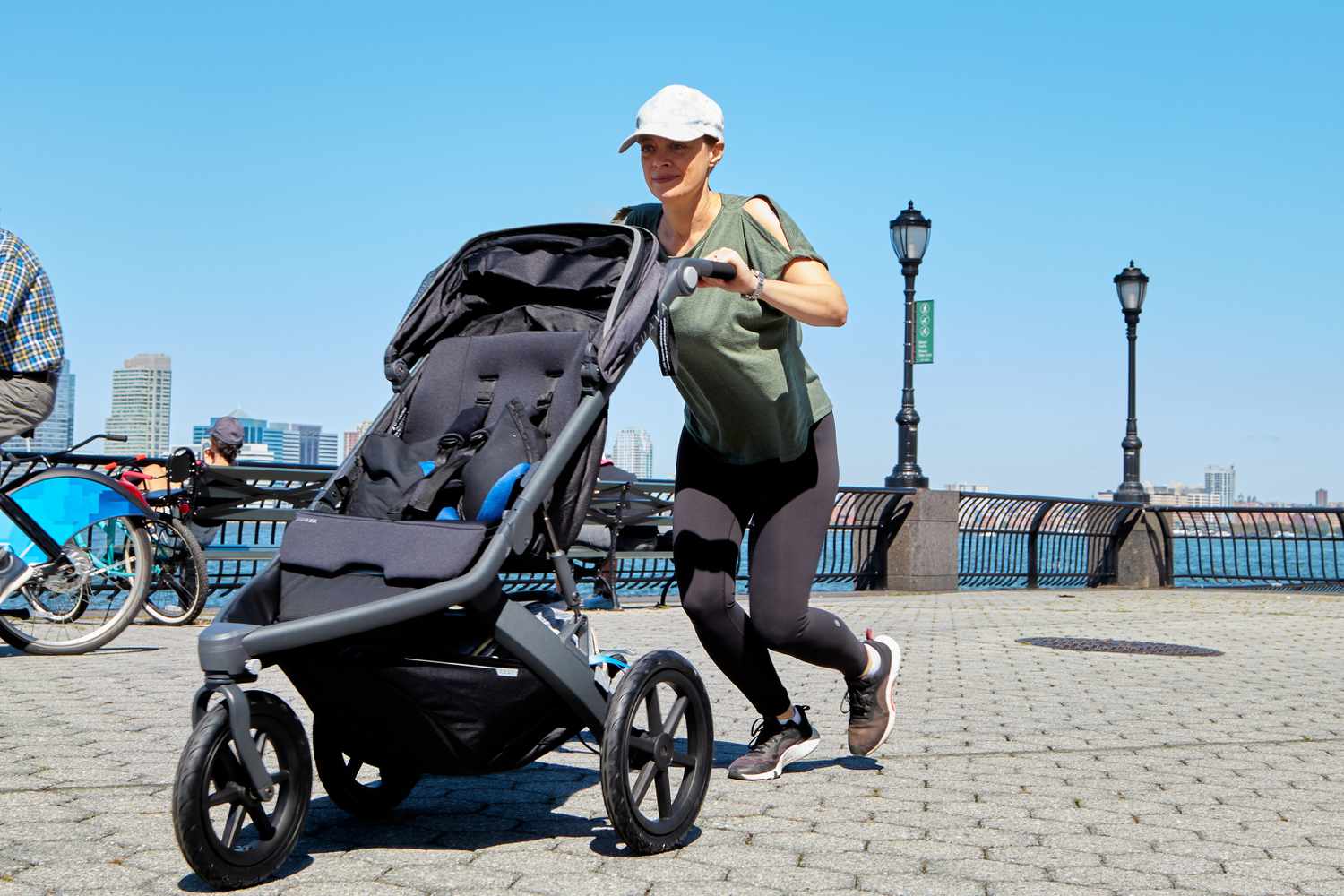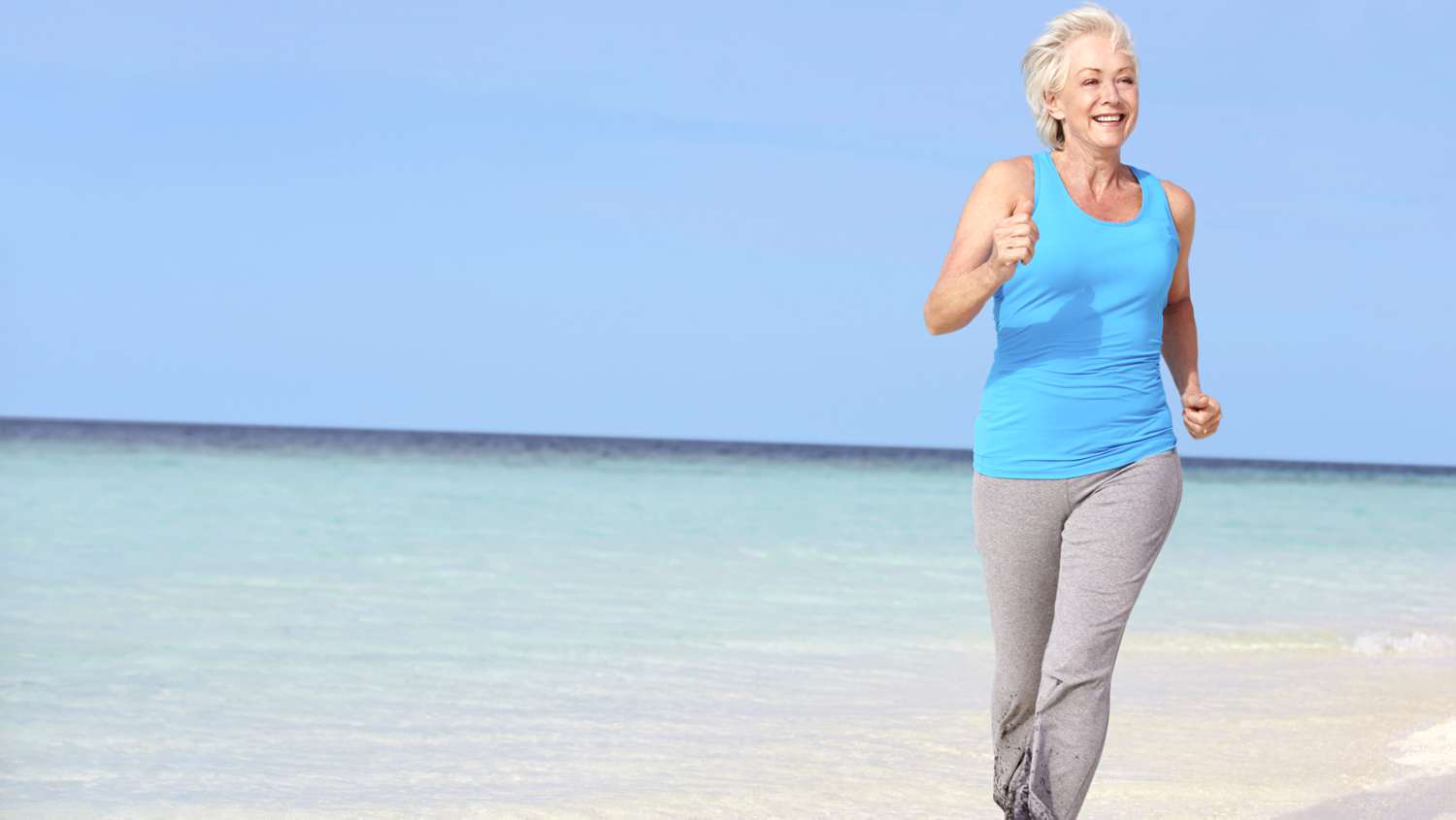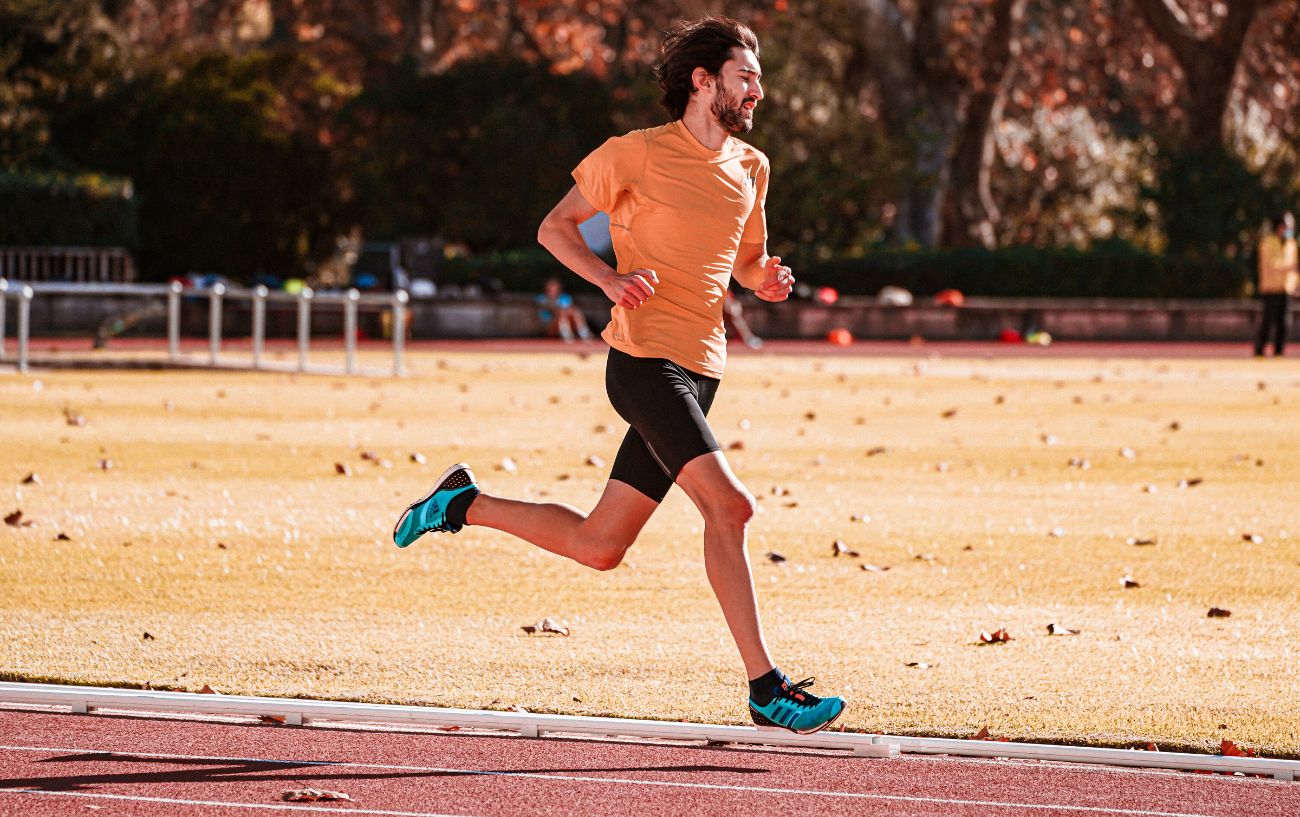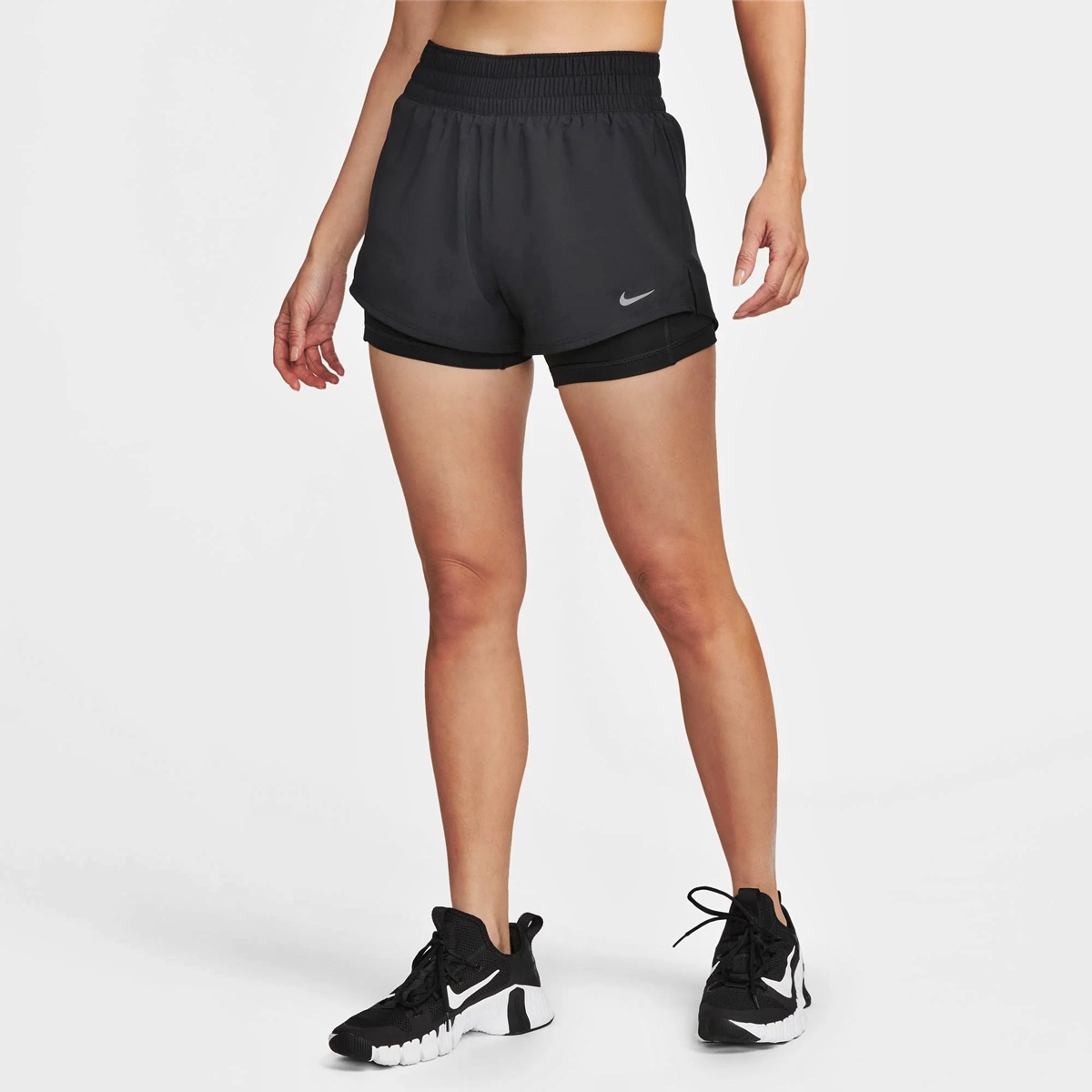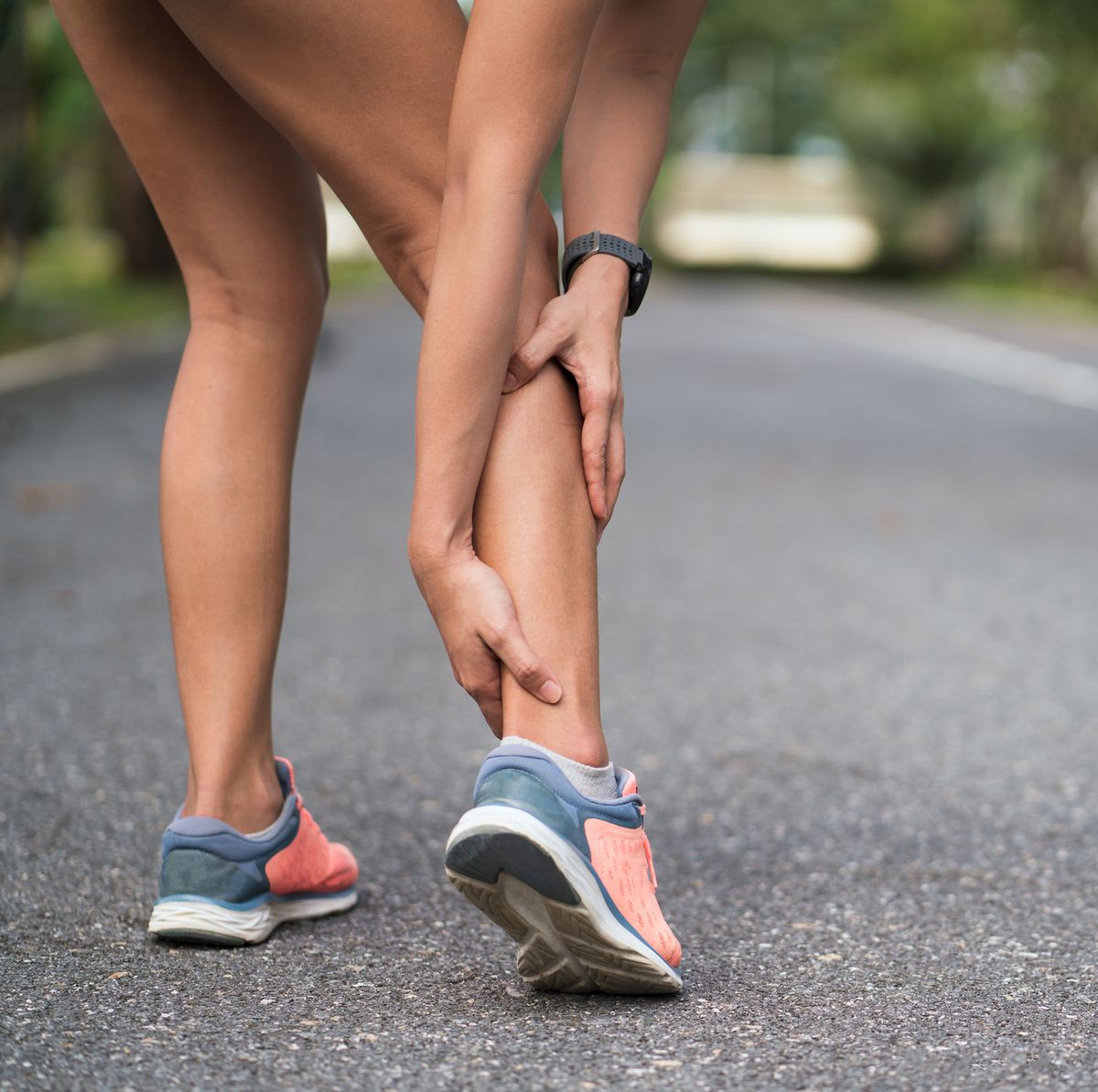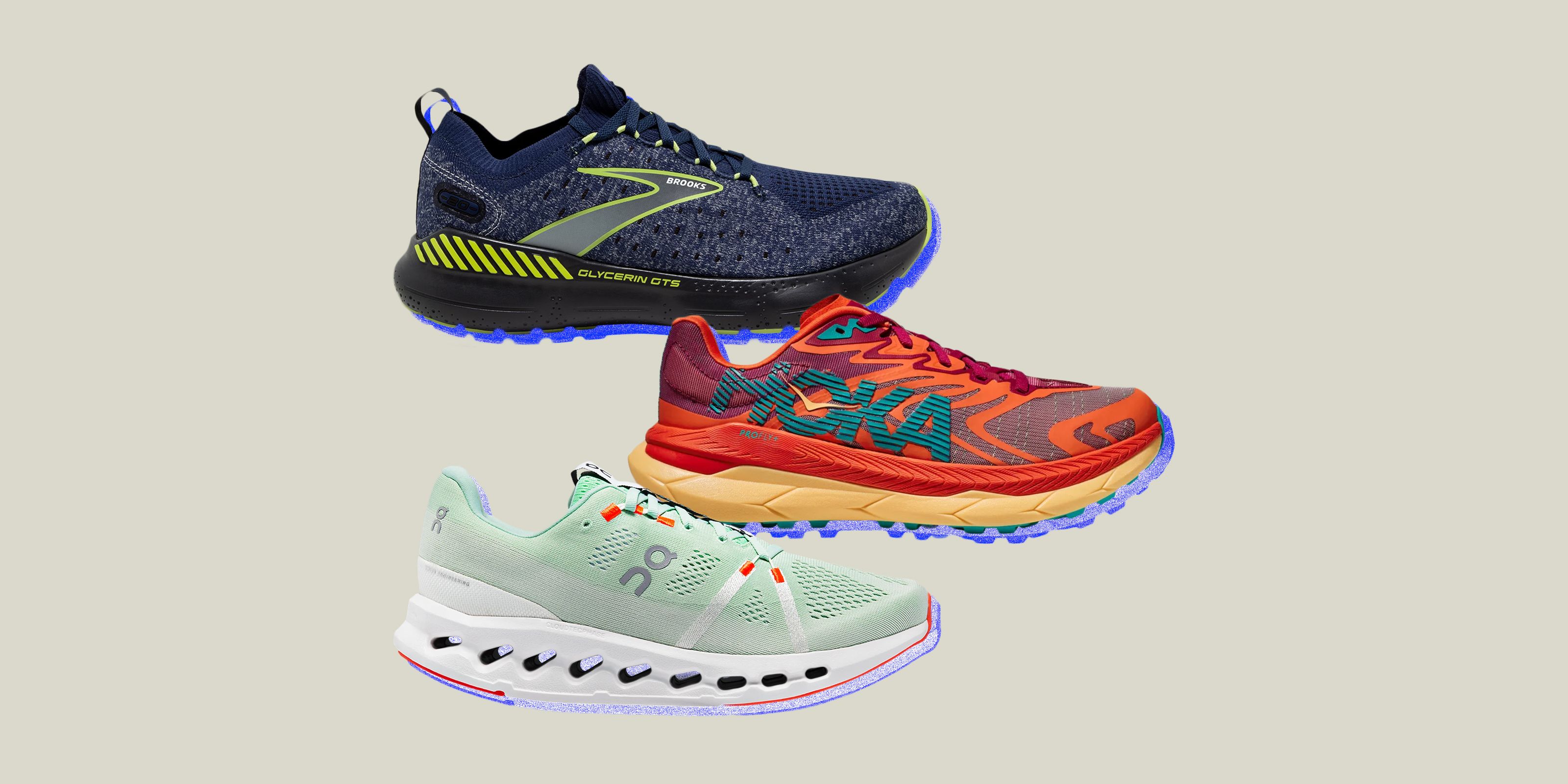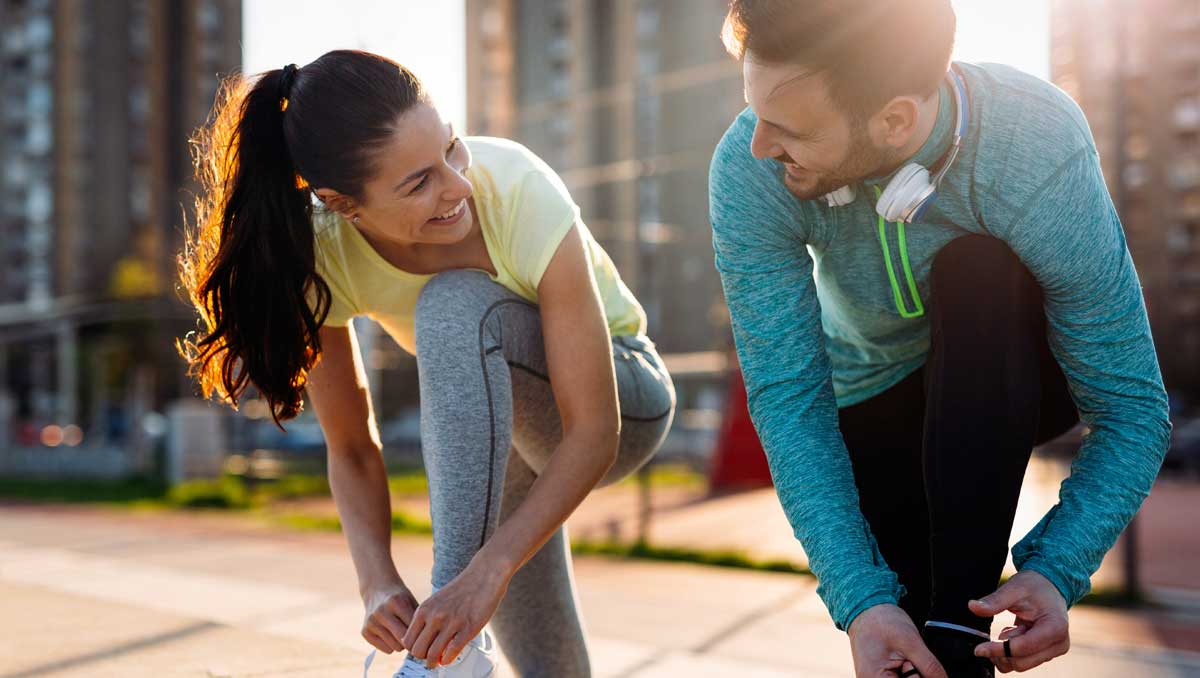

Featured
What To Wear When Jogging
Modified: May 22, 2024
Discover the perfect jogging attire with our featured collection. Stay comfortable and stylish during your runs with our top picks for what to wear.
Introduction
When it comes to jogging, having the right attire is crucial for both comfort and performance. Whether you’re a seasoned runner or just starting out, the clothes and accessories you wear can greatly impact your running experience. Running in improper attire can lead to discomfort, injuries, and hindered performance. To make the most of your jogging routine, it’s important to understand the importance of proper jogging attire and how to choose the right apparel for various weather conditions.
The right jogging attire not only provides comfort and protection but also enhances your overall performance. It allows for ease of movement, provides proper ventilation, and helps regulate body temperature. Additionally, the right gear can also serve as a motivator, boosting your confidence and making your jogging sessions more enjoyable.
In this article, we will explore the significance of proper jogging attire and discuss essential factors to consider when selecting your running gear. We will delve into the different weather conditions you may encounter while jogging and provide tips to adapt your attire accordingly. We will also highlight the importance of choosing the right shoes and discuss essential accessories that can enhance your jogging experience. By the end of this article, you will be equipped with the knowledge to make informed decisions when it comes to selecting the appropriate attire for your jogging sessions.
Importance of Proper Jogging Attire
Proper jogging attire plays a significant role in the overall success of your running routine. The right attire not only ensures comfort during your workout but also helps prevent injuries and maximizes your performance. Here are a few reasons why investing in proper jogging attire is essential:
- Comfort: When you’re on your feet, the last thing you want is to feel uncomfortable. Wearing clothing that is too tight, chafes your skin, or restricts your movement can quickly turn your enjoyable jogging session into a painful experience. Proper jogging attire, such as moisture-wicking and breathable fabrics, helps you stay cool, dry, and comfortable throughout your run.
- Protection: Jogging can expose your body to various elements and hazards, such as extreme weather conditions, UV rays, and rough terrains. Wearing the appropriate attire can offer protection against these factors. For instance, wearing a lightweight, long-sleeve shirt with built-in UV protection can shield your skin from harmful sun rays, and wearing reflective gear can enhance your visibility during low-light conditions.
- Performance: The right jogging attire can greatly enhance your performance. Clothing made from moisture-wicking materials helps to regulate your body temperature, preventing overheating and allowing you to maintain optimal performance. Additionally, wearing properly fitted shoes with adequate cushioning and support can reduce the risk of foot and leg injuries and improve your running efficiency.
- Injury Prevention: Investing in appropriate jogging attire can significantly reduce the risk of injuries. Choosing shoes with proper arch support and cushioning can help prevent common running injuries such as shin splints, plantar fasciitis, and stress fractures. Wearing compression socks can improve blood circulation and reduce muscle fatigue, reducing the chances of cramps and muscle strains.
By understanding the importance of proper jogging attire, you can ensure a more enjoyable and efficient running experience. The right attire leads to greater comfort, improved protection, enhanced performance, and reduced risk of injuries. With these benefits in mind, let’s move on to the next section, where we will discuss the unique considerations for jogging in different weather conditions.
Weather Considerations for Jogging
When planning a jogging session, it’s important to take into account the weather conditions you may encounter. Adapting your attire to suit the weather not only ensures your comfort but also helps optimize your performance. Here are some key considerations for jogging in various weather conditions:
- Hot and Humid Weather: Running in hot and humid weather requires special attention to stay cool and avoid overheating. Opt for lightweight, moisture-wicking fabrics that allow proper ventilation and sweat evaporation. Choose shorts or moisture-wicking leggings and sleeveless or short-sleeved shirts to maximize airflow. Don’t forget to wear a hat or visor to shield your face and eyes from the sun, and apply sunscreen to protect your skin from harmful UV rays. Stay hydrated by carrying a water bottle or planning your route where water stations are available.
- Cold Weather: When jogging in cold weather, it’s crucial to layer your clothing appropriately to stay warm without overheating. Start with a moisture-wicking base layer to keep sweat away from your body. Add a middle layer for insulation, such as a long-sleeved shirt or lightweight fleece. Finally, wear a windproof and water-resistant outer layer to protect yourself from the elements. Don’t forget to cover your extremities with gloves, a hat, and warm socks. In extremely cold conditions, consider wearing a face mask or a neck gaiter to protect your face from icy winds.
- Wet Weather: Running in the rain requires proper waterproof attire to keep you dry and comfortable. Invest in a lightweight, waterproof jacket or poncho to shield you from the rain. Choose moisture-wicking socks to prevent waterlogged feet and consider wearing a hat or a cap to keep rain off your face. Additionally, opt for running shoes with good traction to prevent slipping on wet surfaces. Be mindful of your surroundings and avoid running in areas with deep puddles or slippery paths.
- Changing Weather Conditions: If you’re jogging during seasons where weather conditions can be unpredictable, such as spring or fall, it’s important to be prepared for sudden changes. Wear layers that you can easily remove or add as the temperature fluctuates. Consider investing in a lightweight, packable jacket that you can easily carry in case of unexpected rain or chilly winds. Pay attention to weather forecasts and plan your attire accordingly to ensure a comfortable and safe running experience.
By considering these weather-specific factors and adapting your jogging attire accordingly, you can ensure that your running routine remains enjoyable, safe, and effective. The right clothing allows you to navigate various weather conditions with ease and helps you maintain optimal performance throughout your jog. Now that we’ve covered weather considerations, let’s move on to discussing the importance of selecting the right shoes for jogging.
Choosing the Right Shoes for Jogging
When it comes to jogging, selecting the right pair of shoes is paramount. The shoes you wear can greatly impact your comfort, stability, and overall running performance. Here are some essential factors to consider when choosing the right shoes for jogging:
- Foot Type: Understanding your foot type is crucial in finding the right pair of jogging shoes. There are three main foot types: neutral, pronated, and supinated. A neutral foot means your arch is well balanced, pronated means your arch collapses inward, and supinated means your arch doesn’t collapse enough. Knowing your foot type will help you determine the level of stability and cushioning you need.
- Proper Fit: Ensuring that your jogging shoes fit properly is essential to prevent discomfort and injuries. Your shoes should have enough room in the toe box for your toes to wiggle comfortably, but not too much room that your foot slides around. The heel should be secure and not slip while running. Visit a specialized running store to have your feet measured and get expert advice on finding the right fit.
- Cushioning and Support: Jogging puts repetitive stress on your feet, so having proper cushioning and support is essential. Look for shoes with adequate cushioning in the midsole to absorb impact and protect your joints. Additionally, consider the level of support you need based on your foot type. Pronators may benefit from shoes with stability features, while supinators may require more neutral cushioning.
- Flexibility and Responsiveness: Your jogging shoes should provide the right balance of flexibility and responsiveness. They should allow for natural foot movement while providing enough stability and responsiveness to propel you forward. Flex the shoe with your hand to check its flexibility. It should bend easily at the ball of the foot.
- Traction: The outsole of your jogging shoes should provide adequate traction to prevent slipping and ensure stability, especially when running on different surfaces and terrains. Look for shoes with durable rubber outsoles and multidirectional tread patterns that offer good grip.
- Quality and Durability: Investing in a high-quality pair of jogging shoes is essential for long-term comfort and performance. Look for reputable brands known for their excellent quality and durability. Although they may be more expensive, high-quality shoes will last longer, provide better support, and ultimately save you money in the long run.
By considering these factors and taking the time to find the right pair of jogging shoes, you can greatly enhance your running experience. The right shoes provide the necessary support, cushioning, and stability to minimize the risk of injuries and optimize your performance. Now that we’ve covered shoe selection, let’s move on to discussing tips for selecting the right jogging apparel.
Tips for Selecting the Right Jogging Apparel
Choosing the right jogging apparel goes beyond style; it impacts your comfort and performance during your runs. Here are some useful tips to consider when selecting the right jogging apparel:
- Choose Moisture-Wicking Fabrics: Look for apparel made from moisture-wicking fabrics that draw sweat away from your skin. This helps keep you dry and comfortable throughout your jog.
- Prioritize Comfort and Ease of Movement: Opt for clothing that allows for a full range of motion and doesn’t restrict your movements. Look for apparel with stretchable materials and consider trying on clothes before purchasing to ensure the perfect fit.
- Consider the Season: Adapt your apparel to the current weather conditions. In warmer months, wear lightweight and breathable clothing to stay cool, while in colder seasons, layering is key to adjust your body temperature accordingly.
- Dress in Layers: Layering helps you adapt to changing weather conditions and allows you to remove or add clothing as needed. Start with a moisture-wicking base layer, add an insulating mid-layer, and top it off with a protective outer layer.
- Reflective Elements: If you plan to jog during low-light conditions, choose apparel that features reflective elements such as strips or logos to enhance your visibility to others, especially when running near roads or in busy areas.
- Choose Proper Undergarments: Wearing the right undergarments is essential for comfort and minimizing chafing. Invest in moisture-wicking sports bras, underwear, and socks to prevent irritation and blisters.
- Accessorize Wisely: Consider incorporating accessories such as a hat or visor to protect your face from the sun and keep sweat out of your eyes. Wearing sunglasses with UV protection can shield your eyes from harmful rays.
- Don’t Forget About Safety: If you plan on jogging in low-light conditions or at night, wear bright and reflective clothing, and consider using a headlamp or carrying a flashlight to ensure your safety.
- Experiment and Personalize: Everyone has different preferences and comfort levels when it comes to jogging apparel. Take the time to experiment with different brands, styles, and fabrics to find what works best for you. Personalize your attire with colors and patterns that inspire and motivate you.
By following these tips, you can ensure that you’re selecting the right jogging apparel that suits your needs and enhances your running experience. Remember, the right attire not only keeps you comfortable but also boosts your confidence and motivation during your jogging sessions.
Essential Accessories for Jogging
In addition to choosing the right attire, incorporating essential accessories can elevate your jogging experience and help improve your performance. Here are some key accessories to consider for your jogging routine:
- Running Watch or Fitness Tracker: A running watch or fitness tracker is a valuable accessory that allows you to track your distance, pace, heart rate, and other vital metrics. It can help you set goals, monitor your progress, and stay motivated.
- Mobile Phone Armband: Carrying your phone safely and conveniently is important, especially if you use it for music, navigation, or emergencies. A mobile phone armband securely holds your phone in place, allowing you to have easy access to it during your jog.
- Hydration Belt or Water Bottle: Staying hydrated during your jog is crucial, especially on longer runs. Invest in a hydration belt or a handheld water bottle to ensure you have access to water or sports drinks to quench your thirst while on the go.
- Running Belt or Waist Pouch: A running belt or waist pouch provides a convenient and secure way to carry small essentials such as keys, ID, energy gels, or a small snack. It keeps your hands free and minimizes distractions during your run.
- Headphones or Earphones: Listening to your favorite music or podcasts can add a motivational boost to your jogging routine. Invest in wireless headphones or earphones that are specifically designed for sports activities to ensure a secure and comfortable fit.
- Compression Socks or Sleeves: Compression socks or sleeves provide graduated compression to improve circulation and reduce muscle fatigue during and after your jog. They can also help prevent injuries such as shin splints and calf strains.
- Running Hat or Visor: Protecting your face and eyes from the sun’s rays is important during sunny jogging sessions. A lightweight running hat or visor provides shade and keeps sweat out of your eyes, allowing for a more comfortable and focused run.
- Safety Gear: If you jog in low-light conditions or at night, ensure your safety by using reflective gear such as a reflective vest or bands. Additionally, you may consider carrying a personal safety alarm or a whistle for added security.
- Recovery Tools: After a challenging jog, proper recovery is essential. Consider investing in foam rollers, massage balls, or compression sleeves to help with muscle recovery, reduce soreness, and improve overall performance.
By incorporating these essential accessories into your jogging routine, you can enhance your comfort, safety, and overall experience. Choose accessories that align with your specific needs and preferences, and don’t be afraid to experiment to find the perfect combination for a successful jogging session.
Conclusion
Selecting the right attire and accessories for jogging is crucial for a comfortable, enjoyable, and safe running experience. From choosing the appropriate clothing for different weather conditions to selecting the right pair of shoes and incorporating essential accessories, each aspect plays a significant role in optimizing your performance and preventing injuries.
Proper jogging attire should prioritize comfort, breathability, and moisture-wicking properties. Consider the specific weather conditions you’ll be jogging in and adapt your clothing accordingly. Layering can help you adjust your body temperature as needed. The right pair of running shoes should provide proper support, cushioning, and stability based on your foot type. Pay attention to fit, flexibility, and durability when selecting your shoes.
Accessories such as a running watch or fitness tracker, mobile phone armband, hydration belt, and safety gear can further enhance your jogging routine. These accessories not only offer convenience but also contribute to your safety and overall performance.
Remember to personalize your running attire and accessories to suit your preferences and motivation. Experiment with different brands, styles, and fabrics to find what works best for you. By investing in high-quality jogging attire and accessories, you can enhance your comfort, reduce the risk of injuries, and stay motivated throughout your running journey.
So, lace up your shoes, put on your favorite jogging attire, and equip yourself with the essential accessories. With the right gear, you’re ready to hit the pavement and make the most out of your jogging sessions. Happy running!
